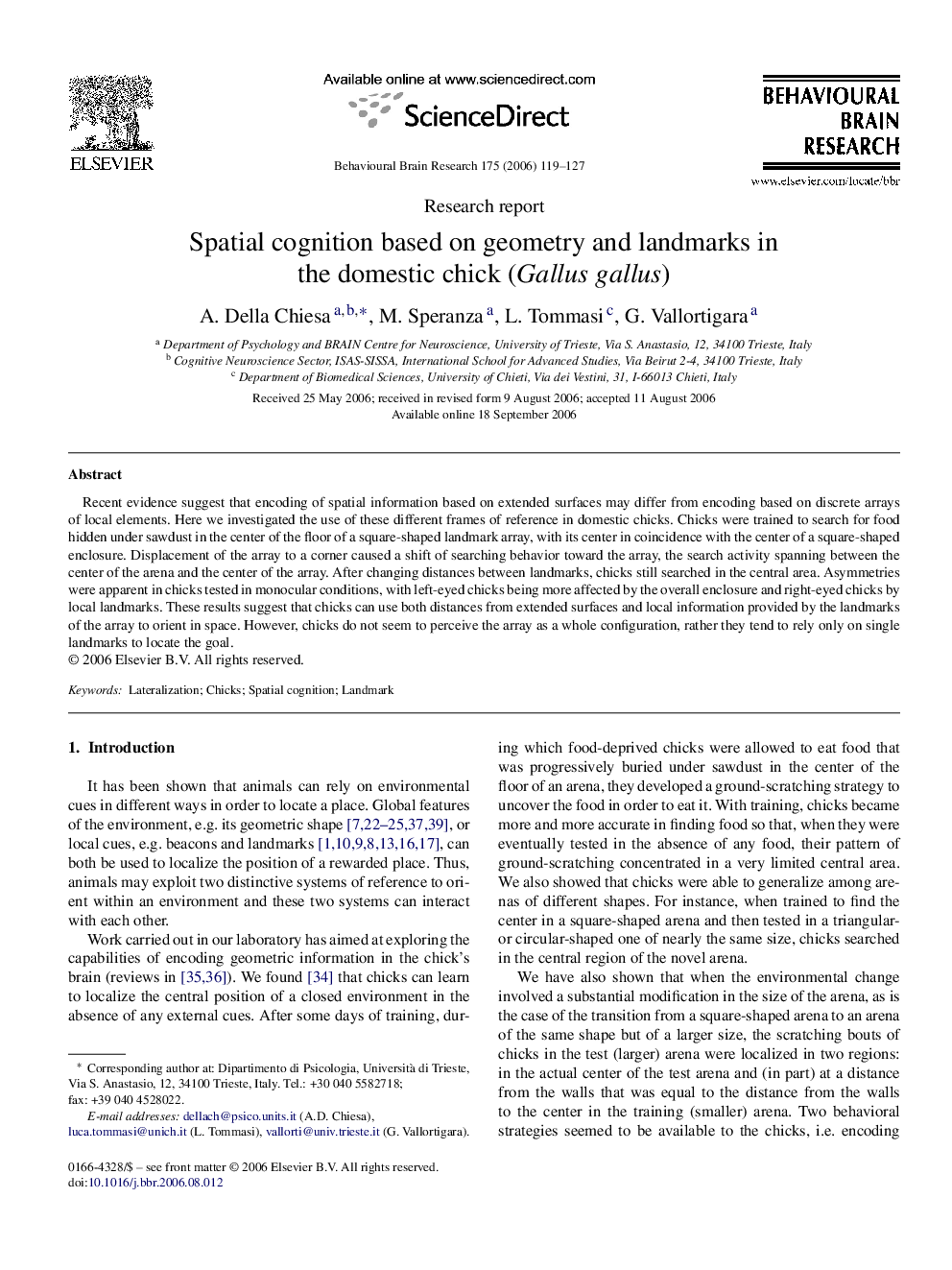| Article ID | Journal | Published Year | Pages | File Type |
|---|---|---|---|---|
| 4315936 | Behavioural Brain Research | 2006 | 9 Pages |
Recent evidence suggest that encoding of spatial information based on extended surfaces may differ from encoding based on discrete arrays of local elements. Here we investigated the use of these different frames of reference in domestic chicks. Chicks were trained to search for food hidden under sawdust in the center of the floor of a square-shaped landmark array, with its center in coincidence with the center of a square-shaped enclosure. Displacement of the array to a corner caused a shift of searching behavior toward the array, the search activity spanning between the center of the arena and the center of the array. After changing distances between landmarks, chicks still searched in the central area. Asymmetries were apparent in chicks tested in monocular conditions, with left-eyed chicks being more affected by the overall enclosure and right-eyed chicks by local landmarks. These results suggest that chicks can use both distances from extended surfaces and local information provided by the landmarks of the array to orient in space. However, chicks do not seem to perceive the array as a whole configuration, rather they tend to rely only on single landmarks to locate the goal.
